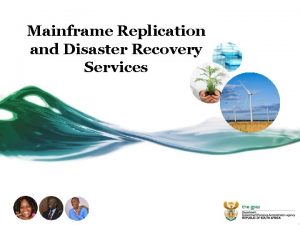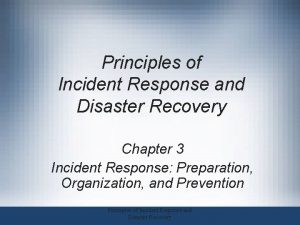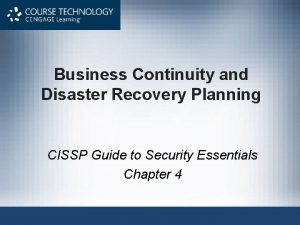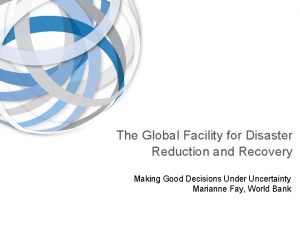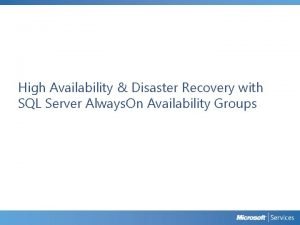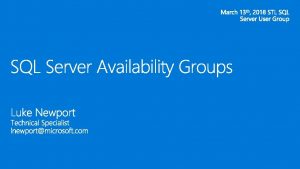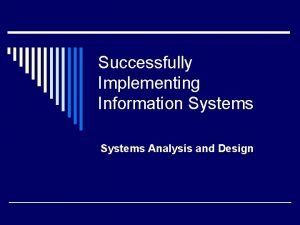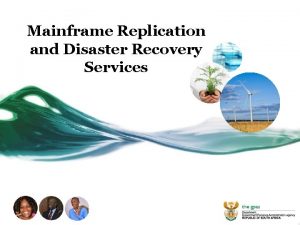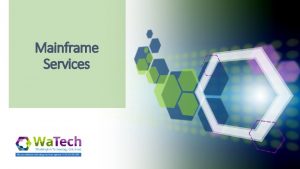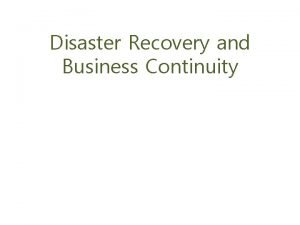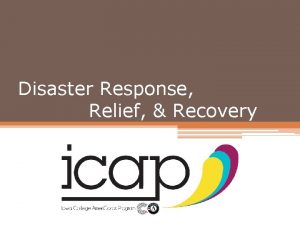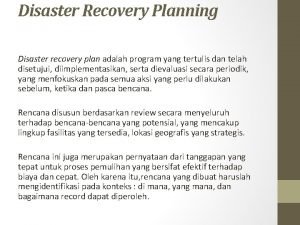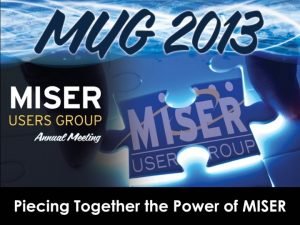Mainframe Replication and Disaster Recovery Services Mainframe Replication








- Slides: 8

Mainframe Replication and Disaster Recovery Services

Mainframe Replication and Disaster Recovery Services Problem Statement: • The GPAA has its own mainframe in one of our Data Centers. • The CIVPEN (NATURAL/ADABAS), the core business application is hosted on the mainframe (Since 1992). • The CIVPEN application comprise of two production Adabas Databases (Active - 597 833 649 Records) (History (Read only) - 904 225 347 records and growing) • Other critical business applications are tightly integrated with the CIVPEN (Civil Pensions) application. Integration is primarily via COMPLETE’s HTTP Server. Towards Excellence 2

Mainframe Replication and Disaster Recovery Services Problem Statement (cont): • The GPAA does not have a DR facility with dedicated infrastructure for the mainframe (Used a Syndicated environment) • In case of a disaster the recovery of the mainframe and application takes anything from 12 to hours (Tape based) - Current RPO = 1 hour – Business expected RPO – Not achievable. • During the recovery time most of the other business applications are also unavailable due to the tight integration. This is not acceptable to our business and clients and need to be addressed. Towards Excellence 3

Mainframe Replication and Disaster Recovery Services Objectives: • Reduce the RTO and RPO to as minimal possible by employing new techniques and technology • Move to a position where we have a ‘Hot Standby’ solution reducing the RPO significantly – to be in line with the other applications (minimal data loss and cross application data integrity problems ). • There are various ways to replicate the data between the active and the warm standby platform but we will leave this to the innovation of the respondents. • Move away from the recovery from Cassettes. • The GPAA is in a modernisation phase where one of the objectives is to migrate the mainframe to a more modern Software Platform. Towards Excellence 4

Mainframe Replication and Disaster Recovery Services Challenges and Points to note: • The PLOGS/Archive logs are not switched on, on the History Database. • The PLOGs/Archive logs are also not switched on, on the active database when we process our monthly Payment and Contribution Reconciliation runs. This is due to the volume of the transactions and the PLOGS that will be created. We protect ourselves by means of full backups before and after the respective runs (twice per month over weekends). • Archiving of data from the Active database to the History database is done once a month (at least) and because the Archive database is Read Only we archive on a file mechanism rather than on a Record mechanism using Adabas utilities. • During a DR or a DR test the GPAA’s mainframe support staff will operate the mainframe/LPAR dedicated to the GPAA at the Service Provider’s Data Centre. • The GPAA will conduct regular verifications to ensure that the data on the two systems are fully in synch. Towards Excellence 5

Mainframe Replication and Disaster Recovery Services Technical Information about Our Mainframe: • IBM z. BC 12 • Machine type: 2828 I 02 • Hardware model: H 06 • Capacity setting: I 02 - 274 MIPS total, 150 MIPS UP, 34 MSU • User memory: 16 GB • FICON (disk, CTC+tape)channels: 12*8 GB/s MM • Storage - 2421 -961 - IBM DS 8870 Towards Excellence 6

Mainframe Replication and Disaster Recovery Services Technical Information about Our Mainframe (Cont): • • 3. 6 TB DASD storage dedicated disk storage for replication 140 MIPS (in case of Test or invocation). The full 140 MIPS should only be active in the case of a test or a real disaster. During the replication the MIPS utilization should be limited to the maximum capacity that will be required for the replication. • The service provider to propose how many MIPS will be required for the replication. • • ZOS 2. 1 capable operating system. 3592 tape drives for bulk data restores and for backups Towards Excellence 7

Mainframe Replication and Disaster Recovery Services Questions Towards Excellence 8
 Mainframe disaster recovery services
Mainframe disaster recovery services Principles of incident response and disaster recovery
Principles of incident response and disaster recovery Backup and disaster recovery mississippi
Backup and disaster recovery mississippi Business continuity plan steps cissp
Business continuity plan steps cissp Global facility for disaster reduction and recovery
Global facility for disaster reduction and recovery Sql server high availability and disaster recovery
Sql server high availability and disaster recovery Read-scale availability groups
Read-scale availability groups Principles of incident response and disaster recovery
Principles of incident response and disaster recovery Disaster recovery planning in system analysis and design
Disaster recovery planning in system analysis and design
